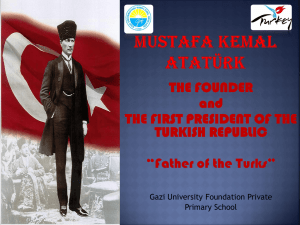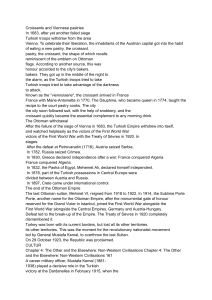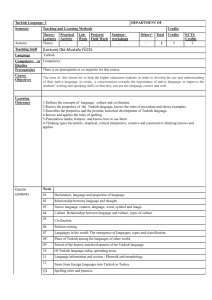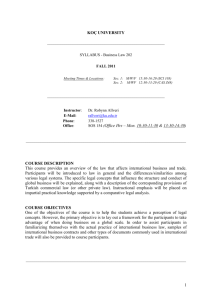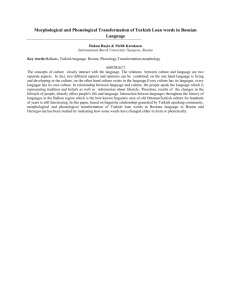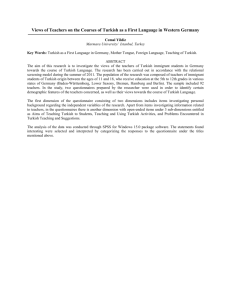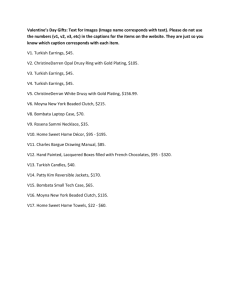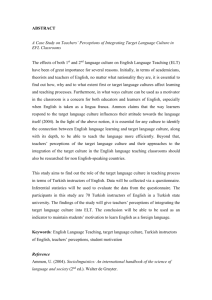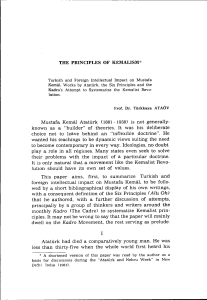Yeni adam (the new man)
advertisement
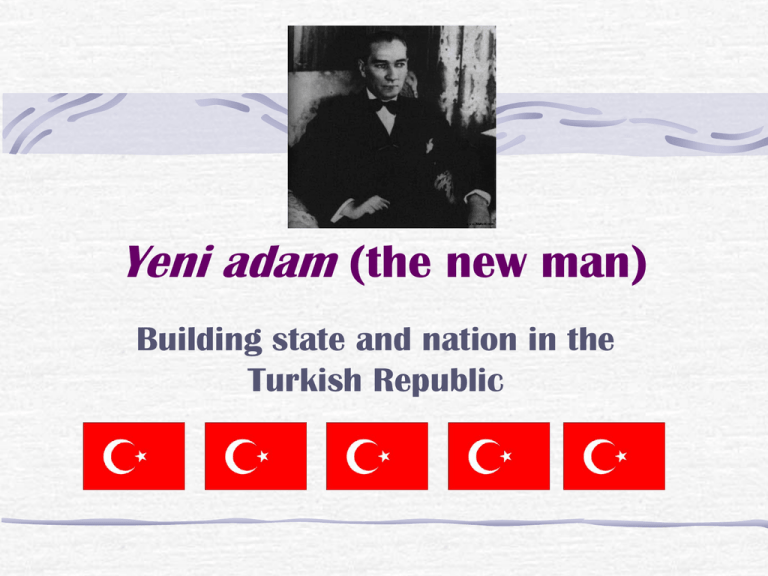
Yeni adam (the new man) Building state and nation in the Turkish Republic How to build a new state: external steps Gain sovereignty over land Post WWI: Anatolia divided between France, Britain, Greece, Russia, Italy 1920 Treaty of Sevres (never implemented): Creation of Armenia, Kurdish plebiscite Turkish war of independence, 1921-1922 1923 Treaty of Lausanne Population exchange between Greece and Turkey Establish borders West and East Lose Mosul (1926), Gain Hatay (1939) Get international recognition Turkey joins League of Nations, 1932 Human effects: 20% decline in Anatolian population… 2.5 million Anatolian Muslims dead… around 1 million Armenians dead… in some provinces around 30% women were widows…famine, epidemics, mass migration. What kind of state? The nation state as the new prototype Role models: powerful national states New international norms End of God: Need for new legitimizing discourse How to build a new (national) state: internal steps Establish and extend state authority Center The Republican Regime (Ankara) One-party state under the Republican People’s Party (RPP) Drawing in the Periphery Creation of new administrative provinces, railroads Invent the nation The new Turk (Gökalp): National, western, modern, secular Boundaries of belonging and exclusion Reinventing the state Creation of the Turkish Republic, 1923 Abolition of the Sultanate, 1922 Abolition of the Caliphate, 1924 Turkish Grand National Assembly under the control of Mustafa Kemal and the RPP Increasingly authoritarian after 1925 Photo: http://www.stanford.edu/~ofidaner/ataturk/pictures/html Guiding principles: Kemalism Republicanism Opposed to caliphate Nationalism Opposed to internationalism Explicitly Turkish (anti-Ottoman) Popularism Classless society (anticommunist) Etatism (“Statism”) State-directed industrialization Secularism State control over religious institutions “Revolutionism” or Reformism Continuing commitment to “western” Kemalist reforms Creating the new nation: Image & Practice What Turks should wear Hats not fezzes (1925) Religious attire prohibited in public (1934) Veil discouraged (but not banned) How Turks should be named Abolition of nicknames and personal titles (1934) No more “Pasha”s, Beys, and Efendis Taking of surnames (last names) (1934) Mustafa Kemal Atatürk An early image of Mustafa Kemal (Ataturk) praying outside of the Turkish Grand National Assembly building. Probably from 19201922 prior to the establishment of the Republic and the abolition of the fez. Photo: http://www.stanford.edu/~ofidaner/ataturk/pictures/html/dua.html New forms of dress, 1930s. Creating the nation, cont. Management of time and space Introduction of Western calendar (1925) Introduction of the metric system (1931) Relationship with god modern secular system of jurisprudence (instead of Sharia law) (1926) Banning of religious brotherhoods (tarikat) (1925) Sunday as day of rest (not Friday) Creating the new nation, cont. Gender Relations and the status of women Right to vote and be elected (1934) Celebration of new female images Banning of polygamy How to’s of Nation-building Two examples of major nationbuilding projects in Turkey 1) Cultivate your youth* “The government regards the child as the root of the country, as that which gives the nation its numbers, and as the foundation of the military. The child is in training to be a member of the country’s governing body … and is the extension of today’s power into the future. The child is the consumer of the country’s products and the producer of agriculture and merchandise. The child is the greatest asset and resource of the country. The child is the nation itself.” --Dr. Salim Ahmed * Images and content in this section drawn from the work of Kathryn Libal, U. Connecticut. Thanks to her for their use! The “Robust Turkish Child,” front cover, 1928/29 “A nation’s future is based upon its children’s happiness, health, & industriousness,” from 1927/28 “Robust and Sweet Children”, 1927/28 Cartoon referring to 23 April Sovereignty and Children’s Day, 1930 Long may you live! Today’s our day too. Mustafa Kemal Atatürk with some of his adopted children. 2) Develop and celebrate a common language New use of Roman alphabet (instead of Arabic) 1928 “Purification” of Turkish through eradication of Persian and Arabic-origin words Sun-language theory: Turkish as the “father” of all languages Turkish Language Institute (Turk Dil Kurumu) Photo: Maynard Owen Williams, National Geographic, Jan. 1929, p. 94 Ottoman Turkish… Modern Turkish…

